“Nature doesn’t promise you anything – an afterlife, rewards for good behaviour, protection from enemies, wealth, happiness, progeny, all the things humans desire and pray for. No, nature does not promise these things. Nature is a reward in itself. It is there, to be appreciated, to be understood, to be lived and loved. And in its way it gives us everything- the bounty and goodness of the earth, the sea, the sky. Food, water, the air we breathe. All the things we take for granted.
And sometimes, when we take it too much for granted, or misuse its generosity, Nature turns against us and unleashes its generosity, Nature turns against us and unleashes forces that overwhelm us – earthquake, tidal wave, typhoon, food, drought. But then it settles down again and resumes its generous ways.
For it is about renewal-seasons and the weather, sunlight and darkness, the urgency of growth, the fertility of the seed and the egg. Governments rise and fall, machines rust away, great buildings crumble, but mountains still stand, rivers flow to the sea and the earth is clothed with grass and verdure…”
I particularly love this narrative by Ruskin Bond, as it manifests Nature as an extremely giving and wise-old being. We have always been taught to respect and live in harmony with nature and believe that all creations are divine. The philosophy may seem primitive but it did help in protecting nature, judicious use of natural resources and thereby preventing overexploitation of our shrinking natural resources.
Most of our festivals have been supreme examples of celebrating the precious and symbiotic relationship we share with the organisms we share this earth with. Worshipping the animals, trees, water, fire meant treating them with respect and expressing our gratitude towards them. It is absolutely fine to move away from such symbolic gestures but when we choose not to educate ourselves towards the pressing environmental issues or the conditions of our farmers it does mean that we choosing to neglect the health of our society.
One such festival that portrays the very fine working relationship between humans and animals is the NAG PANCHMI. It is a festival marked to say thank-you to the snakes, often-called Kshetra Paal meaning care takers of the areas/farms. Snakes play an important role in regulating pests on farms hence the farmers worship them for protecting their farms, their crops, which in a way are their treasures…..
In Gujarat Nag Panchmi also marks the beginning of a mini festive season. Nag Panchmi is followed by Randhan Chaat a day when most households indulge in a cooking marathon, when they cook foods that are to be consumed on the next day. The following day by Shitala Saatam or Shitala Shasti, when the kitchen fires are given a rest, as it is believed on this day Shitala Mata – Pox Goddess visits the chula/stoves and if the hot stove burns her she might curse the family, so it was better not to offend her and maintain a day off. Saatam is followed by Janmashtmi – Lord Krishna’s birthday. In short these are the days of fasting, feasting and revelry. The agrarian communities of Gujarat take a break from their jobs on farm and relax.
I have always believed in the explanation my mother gave behind this festivities. She said, Shitala Satam is a day when women in the rural areas can enjoy a day off from their kitchen and farm duties, socialize, go for picnics and fetes that are organized at various locations through the countryside. Working on the farms is backbreaking job and the women are the ones who play multiple roles and getting such off days proved to be quite a relief.
A variety of foods are eaten during these days. Khaaja (flaky pastries) in different flavors are eaten on Nag Panchmi, 10-15 types of dishes made using seasonal produce and millets are prepared on Randhan Chaath while on Janmashtmi a variety of fasting foods are cooked. On Navmi we have patradi, a single vegetable dish made using several different vegetables.
The recipe I share with you today is of Kuler Na Ladoo, made and offered as Prasad to the Naag Devta (snake god). These Ladoos are made using just three ingredients – ghee, jaggery and Bajra flour.
Kuler Na Ladoo
Makes – makes 18-20 small sized ladoo
Ingredients
- 1 cup Bajra/pearl millet flour
- 1/4th cup ghee/clarified butter, room temperature
- 1/2 cup jaggery, grated
Method
- In a thali or falt dish beat the ghee and jaggery by hand or mix it very well to ensure the jaggery has completely broken down in the ghee.
- Once the homogenous consistency is achieved add the basra flour and mix well to form a rough dough.
- Divide n equal portion and shape well as ladoo.
The Kuler Na Ladoo make an excellent winter warming or energy providing food as Bajra is considered to be excellent source of protein,fibre and minerals.

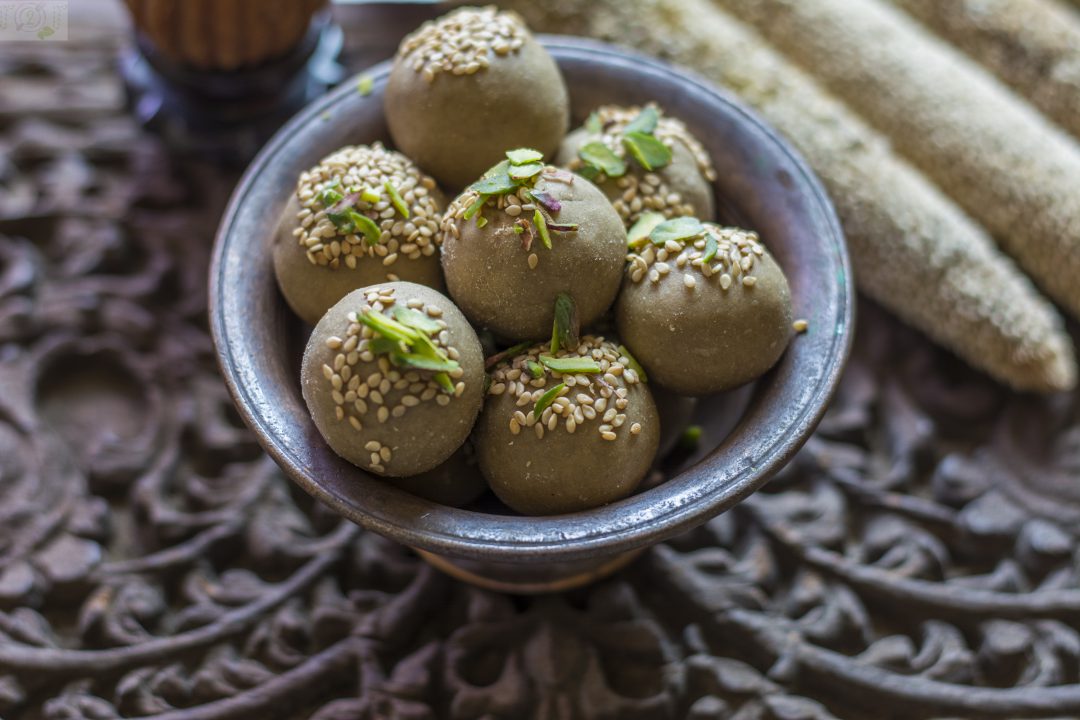
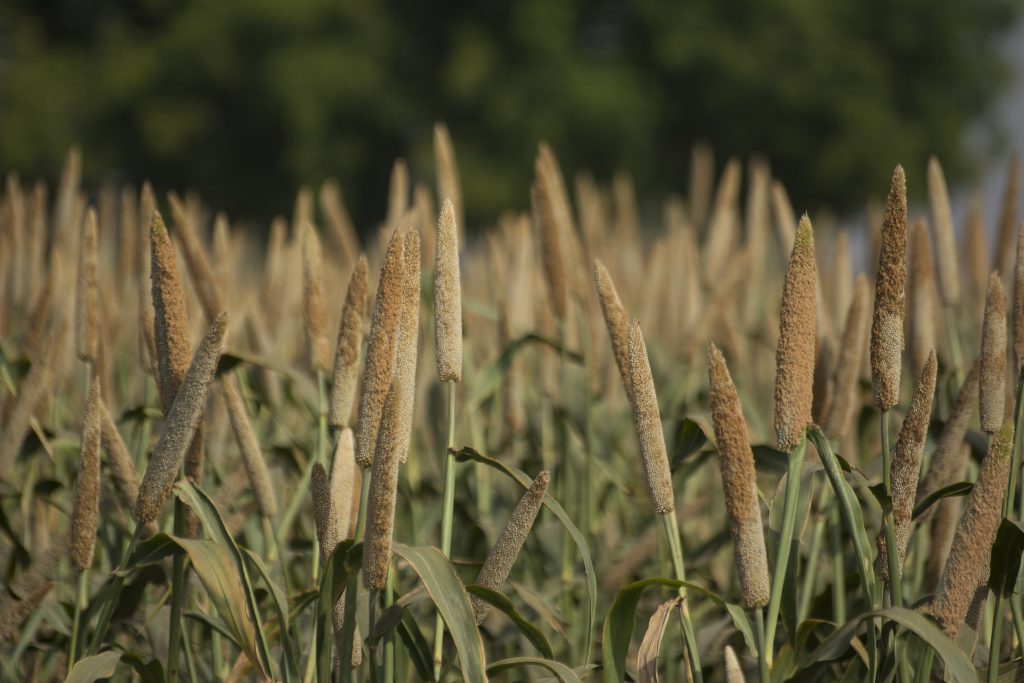

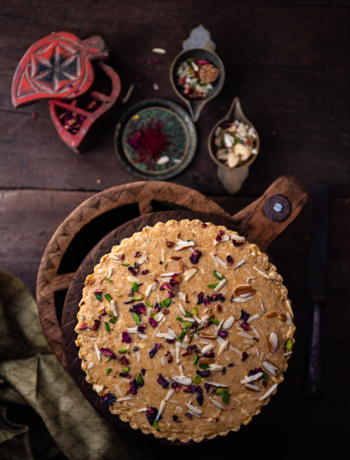
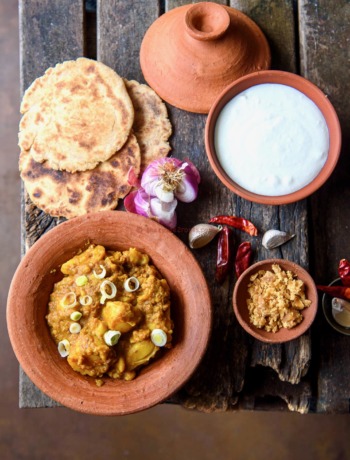
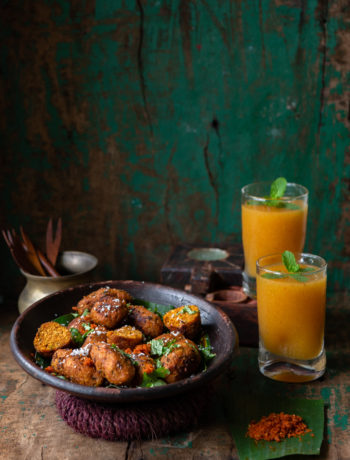
5 Comments
NIDHI
February 18, 2021 at 11:51 pmHi, thankyou for posting local culinary and traditional foods. Today, i wanted to know how to make sheetla mata prasad cooler and was not sure about ingredients. It was late for me to call India and ask. With two minds i googled and luckily found your webpage. Keep spreading and sharing your knowledge. I am going to follow you on instagram for updates. All the best!
Sheetal
July 16, 2021 at 11:29 pmThank you so much Nidhi, I am so glad you found us. Kuler is a childhood favourite, had to document it:) Thrilled that it helped.
p
August 4, 2022 at 5:20 pmis this meant to be uncooked Bajra flour?
Sheetal
August 17, 2022 at 10:33 amyes, uncooked bajra flour.
Sheetal
August 17, 2022 at 10:33 amyes, uncooked bajra flour.